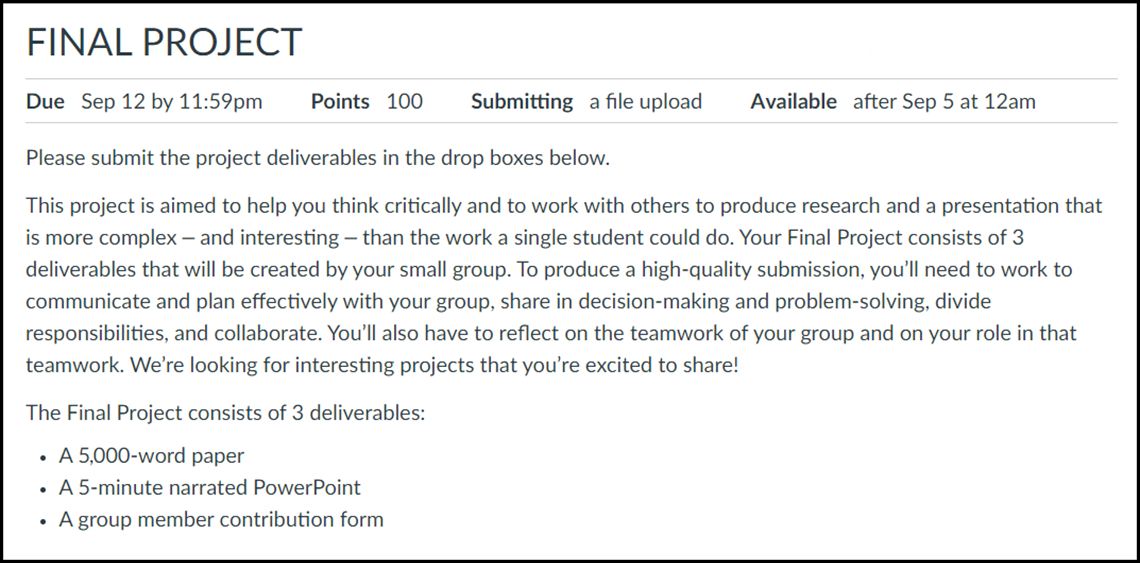
Credit: © Penn State is licensed under CC BY-NC-SA 4.0
The final project in GEOSC 107N: Rocks, Minerals, and the History of Art is a small group case study that requires students to work together to research a naturally occurring material, used in either its natural or processed form, to create works of art or architecture in history. Case studies promote critical thinking and help students to contextualize course content. Conducting these case studies in small groups boosts student engagement by requiring group communication, planning, decision-making, problem-solving, the division of responsibilities, and collaboration. The following description is based on the GEOSC 107N assignment.
Assignment Details: Final Project
The goal of this comprehensive project is for you to synthesize the earth sciences and art history concepts learned in this course. We recommend you work in small groups of 3-4. You will get to know a few students in the class better, and by dividing the research, you will be able to go into greater depth on your selected component of the project. This should create a more engaging and meaningful experience for you and a more comprehensive final product.
Your group will select an Earth material that has not been covered in detail elsewhere in the course and submit your selection to the instructor for approval.
For your selected material, you will research:
- its chemical and physical properties;
- the conditions under which the material forms in the Earth;
- where your material was sourced, in antiquity and today (if appropriate);
- what processing is needed to turn the raw Earth material into an art material;
- symbolic, religious, or political significance (if any);
- 2-3 case studies of a work of art or architecture that uses the selected material;
- how the physical properties of the material – its color, hardness, clarity, stability – influence its symbolism or use in art and architecture; and
- how the relative rarity/abundance and difficulty/ease of transportation and processing impact the value and usage of your material in history.
Your Final Project consists of 3 deliverables:
- A 10-page final paper, including at least three Earth Science references and at least three Art History references.
- A narrated PowerPoint or 5-minute video illustrating your 2-3 case studies of works of art created using your chosen material.
- A group member contribution form that includes self-reflection of each group member.
Considerations
- Time allocation: group projects can save you time grading, but you should spend time communicating with groups, monitoring their progress, and fielding their questions.
- Teaching process skills can help students with group communication, coordination, and conflict resolution. This can take significant planning and class time.
- Planning for effective assessment means consideration of individual contributions and group submissions.
- Evaluation of teamwork may also add complexity.